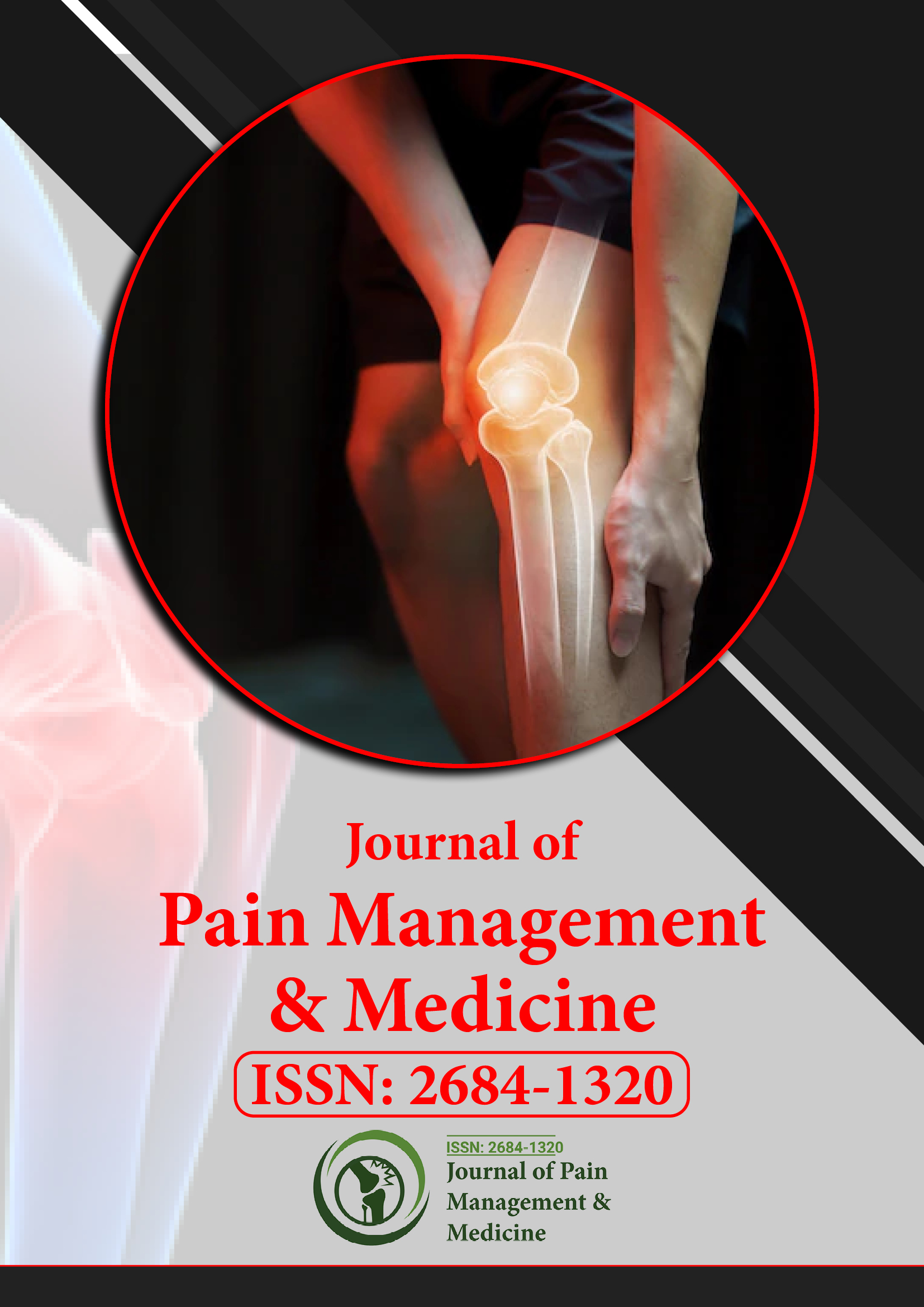Indexed In
- RefSeek
- Hamdard University
- EBSCO A-Z
- Publons
- Euro Pub
- Google Scholar
- Quality Open Access Market
Useful Links
Share This Page
Journal Flyer

Open Access Journals
- Agri and Aquaculture
- Biochemistry
- Bioinformatics & Systems Biology
- Business & Management
- Chemistry
- Clinical Sciences
- Engineering
- Food & Nutrition
- General Science
- Genetics & Molecular Biology
- Immunology & Microbiology
- Medical Sciences
- Neuroscience & Psychology
- Nursing & Health Care
- Pharmaceutical Sciences
Perspective - (2025) Volume 11, Issue 3
Radiating Pain and Its Clinical Significance in Pain Management
David Darko*Received: 30-Apr-2025, Manuscript No. JPMME-25-29859; Editor assigned: 02-May-2025, Pre QC No. JPMME-25-29859 (PQ); Reviewed: 16-May-2025, QC No. JPMME-25-29859; Revised: 16-May-2025, Manuscript No. JPMME-25-29859 (R); Published: 30-May-2025, DOI: 10.35248/2684-1320.25.11.330
Description
Radiating pain is a common clinical symptom encountered across multiple medical specialties, particularly in neurology, orthopedics, and pain medicine. Unlike localized pain, which is confined to a specific region, radiating pain extends from its point of origin along a nerve pathway or into distant regions of the body. This symptom often indicates underlying nerve irritation, compression, or injury, making it an important diagnostic clue in evaluating musculoskeletal and neurological disorders.
Radiating pain is classically described in conditions such as lumbar radiculopathy (sciatica), cervical radiculopathy, and intervertebral disc herniation. In these cases, pain typically begins in the back or neck and radiates down the extremities, often accompanied by numbness, tingling, or weakness. Similarly, shoulder or arm pain radiating into the hand may be seen with brachial plexus involvement, while hip pathology may cause radiating pain into the thigh or knee. In some instances, radiating pain may mimic visceral conditions, such as myocardial ischemia causing pain that radiates to the jaw or left arm, highlighting the need for careful evaluation.
The pathophysiology of radiating pain is closely linked to nerve involvement. Mechanical compression from herniated discs, spinal stenosis, or degenerative joint disease can irritate spinal nerve roots, leading to inflammation and abnormal nerve signaling. This results in pain that follows dermatomal patterns. In addition, chemical irritation from inflammatory mediators, such as cytokines and prostaglandins, may contribute to nerve sensitization and exacerbate symptoms. Central sensitization, where the spinal cord and brain amplify pain signals, may further complicate the clinical picture.
Accurate diagnosis of radiating pain requires a detailed patient history, physical examination, and appropriate imaging studies. Clinicians must distinguish between true neuropathic radiating pain and referred pain, where discomfort is perceived in a distant location but does not follow a nerve distribution. For example, gallbladder disease may cause referred pain to the shoulder, but this differs from nerve-mediated radiation. Neurological examination assessing strength, reflexes, and sensory changes provides valuable information, while imaging techniques such as MRI help identify structural causes like disc herniation or spinal canal narrowing.
Management of radiating pain depends on the underlying cause, severity of symptoms, and impact on quality of life. Initial treatment typically involves conservative measures such as rest, physical therapy, and pharmacological interventions. Nonsteroidal Anti-Inflammatory Drugs (NSAIDs) are commonly prescribed to reduce inflammation and pain. Neuropathic pain agents, including gabapentin, pregabalin, and tricyclic antidepressants, are often effective in cases of nerve-related pain. Muscle relaxants and short courses of corticosteroids may also provide relief in selected cases.
Physical therapy plays a central role in treatment, focusing on strengthening muscles, improving posture, and enhancing spinal flexibility. Techniques such as traction, stretching, and core stabilization exercises help reduce nerve compression and prevent recurrence. Interventional approaches, including epidural steroid injections or selective nerve root blocks, are used when conservative measures fail, providing both diagnostic and therapeutic benefits.
For patients with severe or persistent symptoms, surgical interventions may be considered. Procedures such as discectomy, laminectomy, or spinal fusion are performed to relieve nerve compression and restore function. Advances in minimally invasive spine surgery have improved outcomes, reducing recovery time and postoperative complications. However, surgery is generally reserved for cases with neurological deficits or disabling pain unresponsive to other treatments.
Pain management for radiating pain also involves a holistic approach. Addressing psychological aspects such as anxiety, depression, and fear-avoidance behaviors is essential, as chronic pain can significantly impact mental health. Multidisciplinary care involving pain specialists, physiotherapists, and psychologists often yields the best results. Complementary therapies, including acupuncture, yoga, and mindfulness-based stress reduction, may further enhance pain relief and overall well-being.
In conclusion, radiating pain is a complex symptom that often signifies underlying nerve involvement. Its recognition and careful evaluation are important in differentiating neuropathic from referred pain and in guiding appropriate management strategies. With a combination of pharmacological therapy, physical rehabilitation, interventional procedures, and holistic care, most patients can achieve meaningful pain relief and improved functional outcomes. Ongoing research into nerve biology and novel therapies continues to expand the options available for managing radiating pain in clinical practice.
Citation: Darko D (2025). Radiating Pain and Its Clinical Significance in Pain Management. J Pain Manage Med. 11:330.
Copyright: © 2025 Darko D. This is an open-access article distributed under the terms of the Creative Commons Attribution License, which permits unrestricted use, distribution, and reproduction in any medium, provided the original author and source are credited.

